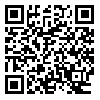Volume 2, Issue 1 (6-2014)
JRIA 2014, 2(1): 133-148 |
Back to browse issues page
Download citation:
BibTeX | RIS | EndNote | Medlars | ProCite | Reference Manager | RefWorks
Send citation to:



BibTeX | RIS | EndNote | Medlars | ProCite | Reference Manager | RefWorks
Send citation to:
Khakzand M, Aghabozorgi K. (2014). Measuring the components of urban space’s quality by adjustment comparison of Iranian-Islamic and western approach. JRIA. 2(1), 133-148.
URL: http://jria.iust.ac.ir/article-1-149-en.html
URL: http://jria.iust.ac.ir/article-1-149-en.html
Abstract: (15560 Views)
Performing diverse activities in urban spaces were assumed a part of the past culture. Moreover, now urban spaces do not have a specific definition in terms of quality. It seems that today’s materialist world is more seeking to increase return in investment and economic quantities and this quantity-oriented state have kept it behind the qualitative issues. For this, faded presence of people in spaces, makes performing this research essential. The effort of this study is to evaluate and have an adjustment comparison between components making urban spaces from the view of western theoreticians and Iranian-Islamic scientists. It seems that remarkable presence of social relations is among the most effective components in increase of urban space’s quality. The data of this study were evaluated in two qualitative and quantitative sections. In qualitative section by help of content analysis method the viewpoints were compared. The quantitative section was conducted by use of analytical description method and a questionnaire was prepared and it was studied in three neighborhoods of Tehran. The data extracted from this questionnaire was inferentially analyzed via SPSS software and they were analyzed beside the other findings gained from literature of the subject. The three neighborhoods of Hafthoz Square, 2nd Sqaure of Niroohavaee and 15 Khordad Street were selected in terms of morphology. The findings of this research indicate that highlighted presence of activities for communication and recreation is highly effective in improving the urban space’s quality. The need for comfort, removal of the need for food and eating is among other components which were effective in the view of people that all of these components in Quran are mentioned as specifications of the space around human being. As a result, the main components of urban space’s quality questioned in this study were convergent to the components introduced by Islamic resources which are neglected in contemporary urban planning despite the emphasis of western resources and scientists.
Type of Study: Research |
Received: 2015/06/28 | Accepted: 2015/06/28 | Published: 2015/06/28
Received: 2015/06/28 | Accepted: 2015/06/28 | Published: 2015/06/28
| Rights and permissions | |
 |
This work is licensed under a Creative Commons Attribution-NonCommercial 4.0 International License. |





